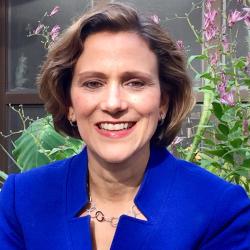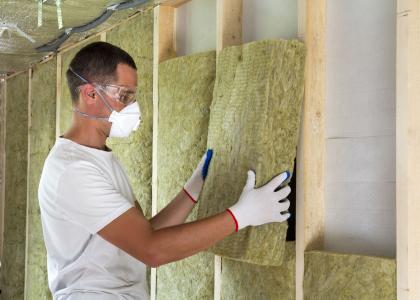In the 1980s, architect Sarah Susanka began noticing a disconnect between the big homes her clients planned to build and what they really wanted. She wrote a book to help them and fellow architects address this problem. But the book reached a much wider audience. Within weeks of its publication in 1998 and her appearance on The Oprah Winfrey Show, it became a bestseller.
Susanka, author of The Not So Big House, will discuss her build-better-not-bigger approach in a keynote address next month at the biennial Summer Study on Energy Efficiency in Buildings. She will offer ideas for how we can create more sustainable homes—and happier lives—by identifying our priorities and designing for them.
Register NOW to avoid late fees
Her message comes at a crucial time. As climate impacts intensify, we need to seek creative ways to rapidly reduce planet-warming emissions. The approach she took to influence the shift toward somewhat smaller and more sustainably built homes has lessons for tackling today’s thorniest issues, including climate change. As Susanka says, “There were a lot of people aspiring to something different than the standard fare.” How do we find the right messages to inspire millions of people to demand change?
We caught up with Susanka, author of eight other books, including The Not So Big Life, to get a sneak peek at her Summer Study address. Here are excerpts of our conversation:
What prompted you to write “The Not So Big House” and why do you think it became such a trend-setting bestseller?
Back in the 1980s and ‘90s, as a founding partner of a 45-person residential architecture firm, I became acutely aware of a disconnect between what people planned to build and what they really wanted. Our new house clients would come into our office asking for the typical floor plan, including formal living and dining rooms. But when we asked them how they lived, most said they didn’t actually use those rooms but needed them for resale, should they ever move. This seemed crazy to me, and I did my best to express my observations to anyone who would listen.
For years, I spoke at local Home & Garden Shows. This strategy worked amazingly well. It not only brought us clients who started to understand the possibilities of building better rather than bigger, but it also started to change the culture of the city where I lived at the time—Minneapolis/St. Paul, Minnesota. (I now live in North Carolina.)
I got tired, though, of trying to change one mind at a time. I wanted to be able to hand a “treatise” of sorts to each prospective client, explaining this smaller but better approach to design. That’s when The Not So Big House was born. I thought I was writing it for our firm and other residential architects, but what happened once the book was published completely changed my life. I hadn’t realized that what I was seeing as a senseless waste of resources was an insight whose time had clearly come. Within weeks of the book’s publication in September of 1998, I was a guest on The Oprah Winfrey Show and Charlie Rose. More than 20 years later, the series is still selling.
The book’s success had to do with my first recognizing that there were a lot of people aspiring to something different than the standard fare—an increasingly bigger house with spaces they would never use. The book appealed to people who believed that home should be a sanctuary, rather than something to knock the socks off the neighbors, and a place built to last for the way they really lived, as well as for the planet’s well-being.
Some people credit you with helping spur the tiny-house movement, but you’re not talking about tiny homes. What do you mean by “not so big”?
When I first used the term, I meant—quite literally—not as big as you thought you would need to build, and reapportioning dollars out of square footage and into quality and character. Typically, a not so big house is around a third smaller than you thought you needed but with the same overall expenditure. It is carefully designed and detailed to last for the long haul, using high quality and sustainable materials.
This definition has gradually morphed, though, into a broader sensibility about how to approach any challenging situation or issue. A not so big approach is one that takes a simpler, more modest, and straightforward route to any objective, by looking at what is actually happening, rather than by trying to prove something to someone, or trying to impress. Its sensibility can be applied to far more than house design.
So how can a “not so big” approach help us tackle today’s societal challenges, especially climate change?
I wrote that first book because I was observing something important about material and energy waste that was invisible to those who didn’t work directly with design-conscious homebuyers. No one realized that many people were living differently than when the basic American house plan was codified.
Although I had tried initially to get that message across to mortgage lenders, building officials, builders, developers big and small, and my fellow architects, none of them seemed particularly interested. I realized I had to go to the people who did care—those who were forking out giant sums of money for things they didn’t really want—the homeowners themselves.
It occurs to me, as I contemplate the challenges of solving many of today’s most difficult challenges, that there must be people in the affected fields, such as climate change research, who have a similar access to a perspective that’s not seen by others. What I did was, very simply, to speak about what I knew. I described the problem I had unearthed, and I suggested a solution—writing not for other professionals and academics, but for the would-be homeowners who wanted to build. Although individually they have very little power, when enough of them read or see something that corroborates their own observations and wishes, they flock to that message like bees to honey.
By speaking what I was seeing, legions of not so big true believers came out of the woodwork to demand change. They did it one by one, but their collective voice changed everything, and in ways I couldn’t have imagined. In other words, I didn’t have to know how or even if change would happen, but I did need to speak. I think this is what we need in many fields right now. I am willing to hazard a guess that there are many today who see, as I did back 25 years ago, something no one else sees and could make a powerful difference by putting it into words or images that those who are affected, or will be, could share.
That’s a not so big approach to climate change if ever there was one. And I believe, because of my own experience, that it could work. I don’t know what the insights are that could be shared, but I bet some of the people reading this do.
How have you applied the “not so big” approach to your own life and how could others do the same?
For that first book, I had to extract myself at least a little from the straitjacket of what I called “my life” to find the time to write. I had always loved writing, but I couldn’t imagine how to find the time. But a day came when I realized unequivocally that I just had to begin. I had to write this stuff down. And as I did, all the things I needed to support my writing fell into place. That was when I really started to live in a not so big way. I let go of all the reasons I couldn’t, and simply paid attention to what I really wanted to do for the good of the whole.
The subtitle for The Not So Big Life is “Making room for what really matters,” and what I’ve come to understand is that what really matters is what we are pulled to do, even when it seems completely impossible. The moment you let go of all the resistances and projections of what bad things will happen if you do, and when instead, you make the time and the space for what you long to do, the world around you shifts in all sorts of apparently miraculous ways to support the realizations of those longings.
You may read these words and doubt me, but that is in fact what happened in my own life, and it happens in the lives of all those who take that leap of faith, without knowing how it will all work out. The only question is how long it takes us to respond to those longings. The future of our species and the health of our planet may well depend upon it. Our job is not to try to figure it all out first, but just to move with what we are called to explore. That’s the path to a highly satisfying and meaningful not so big life, and it’s also, more importantly, the bridge to a truly sustainable future.


